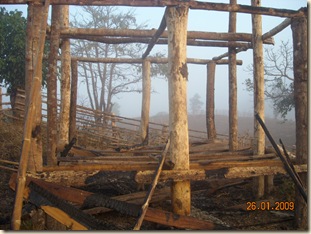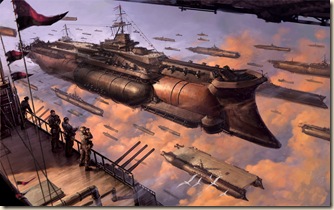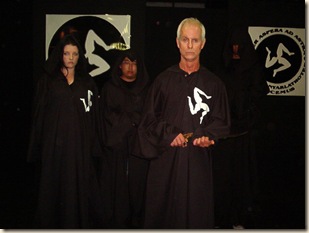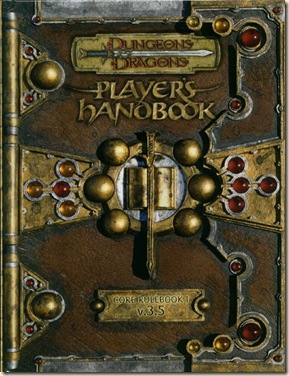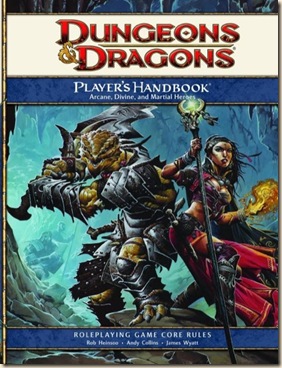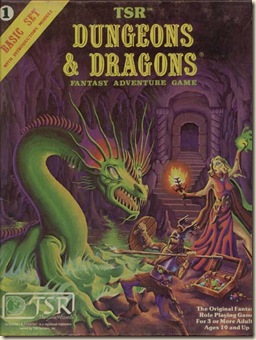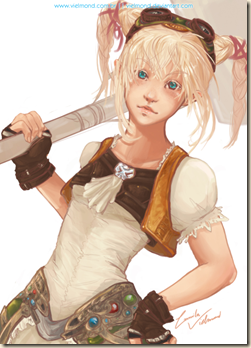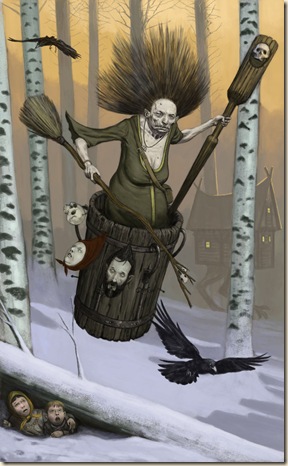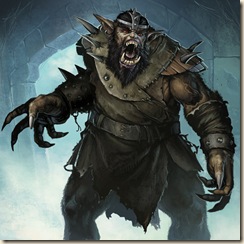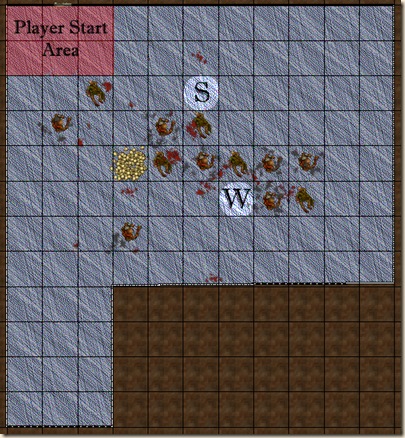Magic: The Gathering and Dungeons and Dragons are owned by the same people. The design and development people for each game work in the same building, creating two intellectual properties steeped in the tropes of fantasy fiction, and thus far, there has been very little overlap between the two. Obviously, the design teams have some level of influence on one another; James Wyatt and Mike Mearls have both posted about their M:TG games on Twitter, and if Mark Rosewater hasn’t played Dungeons and Dragons, I’ll eat my hat.* But we haven’t seen a Dungeons and Dragons collectable card game, and we haven’t seen a Magic: The Gathering role-playing game, and I think that’s a damned shame on both sides of the equation.
There are ways to make a D&D CCG, and it would probably be a good game. I mean, the guys at WotC managed to make Maple Story a compelling CCG, and that intellectual property was complete garbage. Hell, porting over some of the system elements from Maple Story probably wouldn’t hurt. Now I want to design a D&D CCG, but that’s not what this article is actually about, so I’ll get more to my point.
That Magic: The Gathering is not a role-playing game is a fucking travesty.
I don’t say this out of spite. I completely understand that Wizards doesn’t want to compete with itself for your disposable income. I mean, Magic sells a lot of booster packs, and Dungeons & Dragons sells a lot of books, and if they can keep those revenue streams separate for the most part, then they’re getting CCG money, role-playing game money, and the overlap money from guys like me, who do both.
But Magic is a rich fantasy setting that is dying to be explored in ways that can’t be done through flavour text or poorly-written novels. That people even read those books should be evidence enough to Wizards of the Coast that people want a more intimate experience with the settings they’re building for their card game.
People have a natural tendency towards storytelling. As a person who suffers under a primary Storyteller motivation for my role-playing games, I find myself inventing stories all the time, with fragile frameworks to build off of. When I flip through Magic cards, I wonder what exactly it is Nicol Bolas wants out of life, or the motivations of a Shivan Dragon. Are Shivan Dragons protective mothers? Couldn’t tell you, but I’d like to find out, and I’d like to make discoveries like that within the framework of a role-playing game.
We all get the feeling, when watching a bad movie or reading a bad book, that we could do better. When I get that feeling, I know it’s not true. I probably couldn’t write a better novel than that guy, because every time I’ve tried, I stop writing about a quarter of the way through. Instead, I think about how I could steal the authors ideas and make a kick-ass role-playing game out of them. When I read the back of a Magic: The Gathering novel, I get that feeling (the last time I cracked one was in Lorwyn, mostly to see if they’d gotten better; they hadn’t**). Right now, the idea of kicking the crap out of newly awakened Eldrazi seems like an awesome idea for a role-playing game. So awesome, that I’m basing one of the colossi from my Bones of a Dead God campaign on the Eldrazi idea.
But playing with Magic ideas in Dungeons & Dragons, as awesome as it is, doesn’t quite satisfy the desire for a Magic role-playing game. While it’s certainly possible for me to set a D&D game in Dominaria, without the signature spells, the cast of characters, the crazy summoning magic, it just wouldn’t be the same. It would be Dungeons & Dragons. In Dominaria.
So I started working on rules for the thing. The player characters were simple, having only three stats to begin with (Fight, Skill and Spark), and a number of mana that they would have access to at the beginning of each turn. These stats were determined by spending some points into various pools, like a bunch of class-free role-playing game systems. Each player would also have a deck of cards. There were a few different configurations we tried out, and in the end we didn’t find anything that was really satisfactory for how to handle deck-building. Either you could include land, or not, and that complicated things in a huge way. Or you could have a separate land deck. Or you could make Spark checks to create bonds to new mana sources. Or a million other variations on mana production.
To be perfectly honest, the game wasn’t very good. But I believe that to be more my failing than Magic’s. My own design for the game had certain design goals that may or may not have been unrealistic as a single-man design team. Though the game itself was just fun enough go get through a couple of rounds of closed playtesting, it wasn’t quite good enough for me to keep working on. But someone should be working on this right now, someone far more talented at role-playing game design than I.
*I’m not actually wearing a hat. It’s an empty threat.
** This is, of course, entirely my own opinion. I’m sure there are people who have enjoyed Magic novels. I’m not one of those people.
